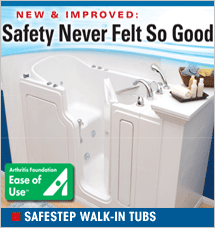
Much of the nation has experienced one of harshest winters on record. Now, many motorists will have to deal with the aftermath of this winter – potholes. As roads freeze and thaw, dirt underneath erodes and road surfaces weaken. Then, when heavy traffic travels over the road, it can crumble, creating potholes. While blacktop roads are most susceptible, concrete roads are not immune.
As we all know, hitting a pothole can ruin tires, damage wheels and suspension parts, cause vehicle misalignment, or even result in an accident. Here are some suggestions on avoiding potholes and what you do if you can't avoid one.
Most obvious, try to steer clear of potholes. Before swerving to avoid a pothole, make sure there are no surrounding vehicles you might hit. Leave sufficient room between you and vehicles ahead so you can avoid potholes without getting into a crash. Watch out for potholes filled with water or hidden by snow since you can't determine their depth until it's too late.
When driving in pothole-infested areas, slow down. This makes it easier to spot potholes and provide sufficient time to avoid them. Driving slower will also minimize damage if you should hit a pothole.
If you can't avoid a pothole, don't slam on the brakes since this could increase the damage done. When you apply the brakes too aggressively, the vehicle tilts forward putting more stress and strain on the front suspension system. When driving over potholed roads, hold the steering wheel firmly to avoid losing control.
One of the most important things to do is ensuring tires are properly inflated. This helps to protect and cushion the wheel rim from receiving damage. Check tire pressure since pressure might be lost by hitting a pothole.
If you hit a pothole, inspect for damage and make repairs as soon as possible. This can prevent more expensive damage from occurring. Look for damaged tires such as cracks, bulges or blisters in the sidewalls. Look for dented or bent wheel rims that can cause tire pressure to leak.
Vehicle alignment is often affected by hitting potholes. Misalignment is easily identified by the vehicle pulling in one direction rather than maintaining a straight path and can result in unsafe handling, rapid tire wear and reduced fuel economy.
Also look for damage to shock absorbers and struts, steering system components, exhaust system, or the engine and transmission. Shocks and struts can take the brunt of the damage caused by hitting a pothole. Signs of shock and strut damage include swaying or rocking when turning, bouncing, bottoming out, a much rougher ride and less responsive steering. Hit a pothole too hard and you can even damage the oil pan causing oil loss and very expensive engine damage.
If the damage is significant and costly, it might be covered by your insurance. Pothole damage accounts for nearly a half million dollars in claims annually in the U.S. Also a few cities may offer reimbursement for pothole-related damage. So check with your local government. Report dangerous potholes that repair crews might have missed to local authorities. Some locales even have pothole hotlines for reporting them.




























































